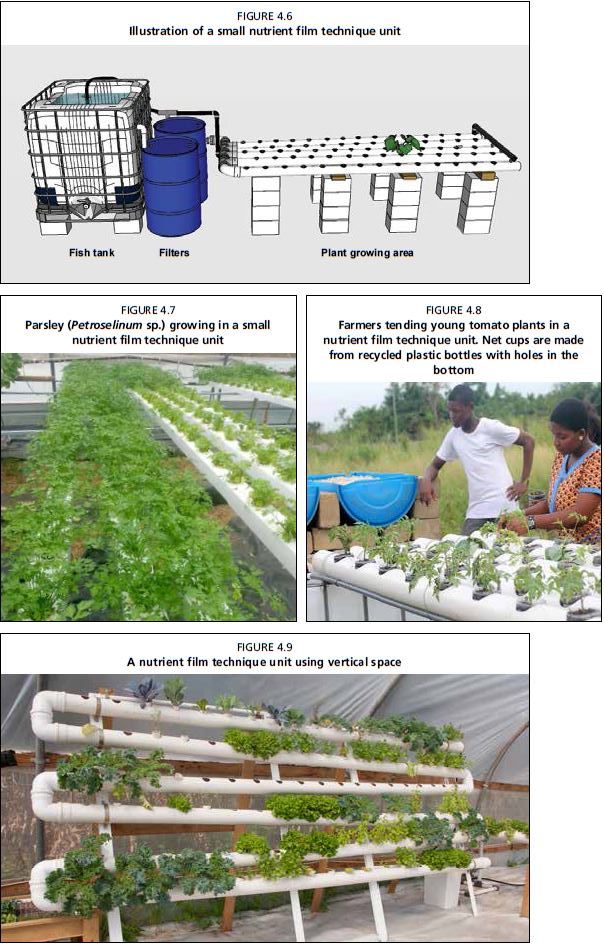4. Design of aquaponic units
This chapter discusses the theory and design of aquaponic systems. There are many design aspects to take into consideration, as virtually all environmental and biological factors will have an impact on the aquaponic ecosystem. The aim of this chapter is to present these aspects in the most accessible way and to provide a thorough explanation of each component within an aquaponic unit.
Section 4.1 discusses the factors to consider when selecting a site for an aquaponic unit, including access to sunlight, wind and rain exposure, average temperature and others. Section 4.2 discusses the general aquaponic components essential for any method of aquaponics, including the fish tank, water and air pumps, the biofilter, the plant growing method and associated plumbing materials. The hydroponic component is then discussed in further detail, focusing on the three most common methods used in aquaponics: the media bed method (Figures 4.1-4.5); the nutrient film technique (NFT) method (Figures 4.6-4.9); and the deep water culture (DWC) method (Figures 4.10-4.13).
FIGURE 4.1
Illustration of a small media bed unit

A specific section then presents a particular type of DWC with low stocking density. A final summary table of each method is provided in order to compare and contrast these three methods.
This chapter is intended only to explain the essential unit components and different methods of aquaponics. For more information regarding the sizing and design ratios for different unit components, please see Chapter 8, which provides the more detailed information, figures and design plans needed to actually design and construct small- scale aquaponic units. In addition, Appendix 8 gives a full step-by-step guide to building a small-scale version of the three methods explained in this chapter using materials widely available.
FIGURE 4.2
Example of a newly assembled media bed unit using in termediate bulk containers
FIGURE 4.3
Taro (Colocasia esculenta) plants growing in a semi-commercial media bed unit constructed in wood and lined with polyethylene liner
FIGURE 4.4
Lush vegetable growth in a backyard media bed unit
FIGURE 4.5
A media bed unit planted with chili (Capsicum spp.) pepper

FIGURE 4.6
Illustration of a small nutrient film technique unit
Fish tank
Filters
Plant growing area
FIGURE 4.7
Parsley (Petroselinum sp.) growing in a small
nutrient film technique unit
FIGURE 4.8
Farmers tending young tomato plants in a nutrient film technique unit. Net cups are made from recycled plastic bottles with holes in the bottom
FIGURE 4.9
A nutrient film technique unit using vertical space

FIGURE 4.10
Illustration of a small deep water culture unit
Fish tank
Filters
Plant growing area
FIGURE 4.11
Lettuce plants growing in a deep water culture unit
FIGURE 4.12
Multiple varieties of lettuce plants growing in a deep water culture unit
FIGURE 4.13
Roots of curly kale (Brassica sp.) growing in a deep water culture unit
